How Tri-Citians can see the Saturday solar eclipse, if the weather cooperates
A mostly cloudy sky is forecast for the Tri-Cities Saturday morning for the first partial eclipse of the sun in 11 years.
It is possible the weather could break long enough to see it and, if not, you can still see it on a big screen.
The LIGO Hanford observatory and Columbia Basin College’s Planetarium plan a viewing event and activities on the LIGO campus near Richland.
If skies are too cloudy to see the eclipse, a NASA livestream is expected to be shown in the LIGO Exploration Center, or LExC.
In addition, the Goldendale Observatory will hold its 50th anniversary celebration the same day with live views of the sun and replays of the eclipse streamed from the solar telescope to big screens.
In the Tri-Cities the eclipse, if visible through the clouds, can be seen starting at 8:07 a.m., says Erin Steinert, director of the CBC Planetarium.
Maximum eclipse, when most of the sunshine is blocked, will be at 9:22 a.m. and the eclipse will be over at 10:43 a.m.
About 86% of the Sun will be covered by the Moon as it passes between the Sun and the Earth at 10:43 a.m. as seen in the Tri-Cities.
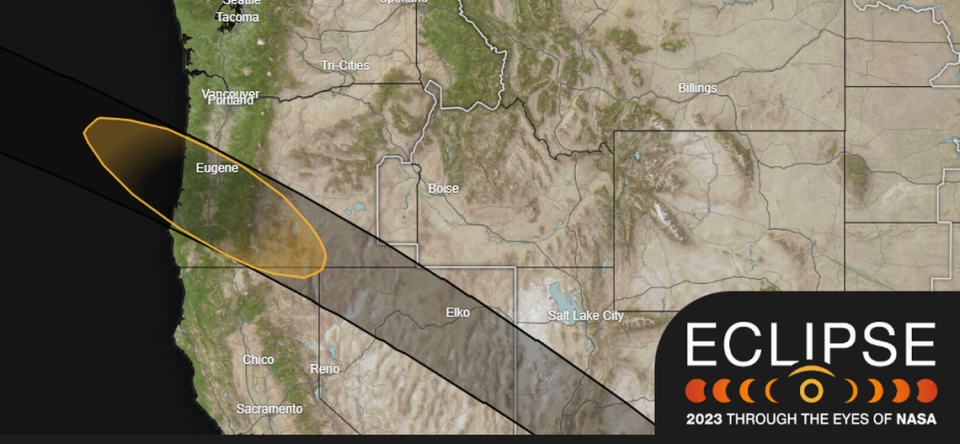
More of the Sun will be covered if viewed from Oregon, but it will still not be the full solar eclipse as seen in North America in 2017.
For the partial eclipse Saturday the moon will be at its farthest point from the Earth as it passes between the moon and the sun. Because it will be smaller than the Sun it does not completely cover the star. This creates a “ring of fire” in the sky, according to NASA.
Tri-Cities eclipse event
The LIGO viewing event will be from 7:30 to 11 a.m. It is free and no signup is needed.
Eclipse viewing glasses and cards will be given out while supplies last.
Planned activities include making pinhole projectors to view solar eclipses. Handouts on the eclipse will be available in English and Spanish.
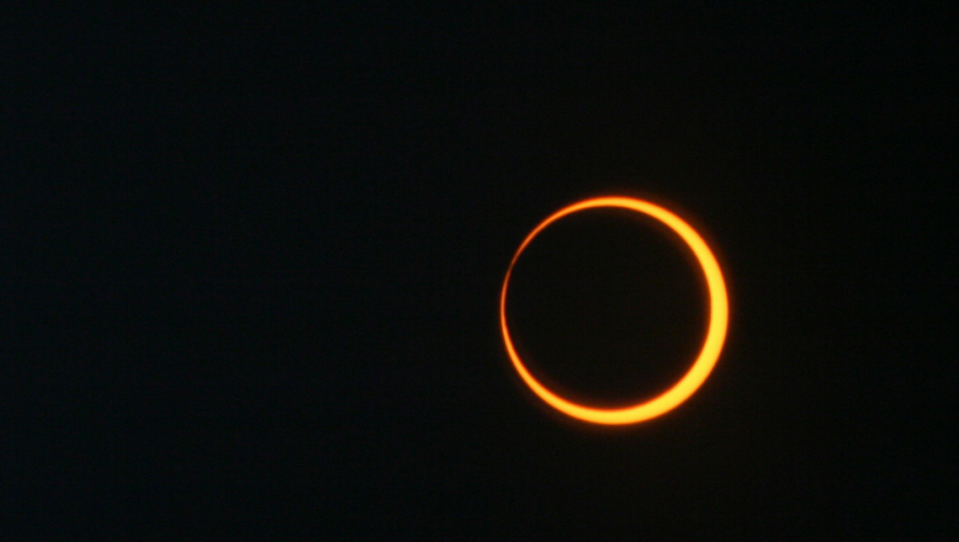
Visitors also can spend time in LExC, a 13,000-square-foot-education center that opened at LIGO last year.
It has hands on exhibits to demonstrate principles of gravitational waves and related sciences to children and adults.
Exhibits include a wave machine that can be manipulated to show who the amplitude of gravitational waves are affected by the energy from the event that caused them and by the distance the wave has traveled.
A giant Slinky stretches across part of the center for a hands-on demonstration of what happens to waves of traveling energy. And rubber balls can be dropped to roll and spin around each other in a gravitational field.
Tours of the LIGO Hanford observatory are being planned the same day with tickets required. Ticket signup ends Oct. 13 and all tickets for tours of two of the four tour times are already gone.
Go to bit.ly/LIGOTourtickets to get a tour ticket or to bit.ly/LIGOHanfordtours to learn more about the tours.
LIGO, the Laser Interferometer Gravitational-Wave Observatory, detects gravitational waves predicted by Einstein’s General Theory of Relativity. The Hanford observatory uses laser interferometry to measure minute ripples in space-time caused by gravitational waves passing through Earth from cataclysmic cosmic events such as colliding neutron stars or black holes or by supernovae.
To reach the LIGO campus take Highway 240 northwest from Richland and turn north onto Route 10, also called Horn Road at the roundabout. LIGO is about six miles north on the left hand side.
Goldendale Observatory
The Washington State Parks’ observatory in Goldendale, which is a little less than a two hour drive from the Tri-Cities, will celebrate its 50th anniversary the day of the eclipse.
Visitors can start arriving at 7 a.m. to view the eclipse. No appointment is needed, but the observatory warns that parking may be limited and requires a Discover Pass. People who cannot find parking will still be given eclipse viewing glasses before they leave.
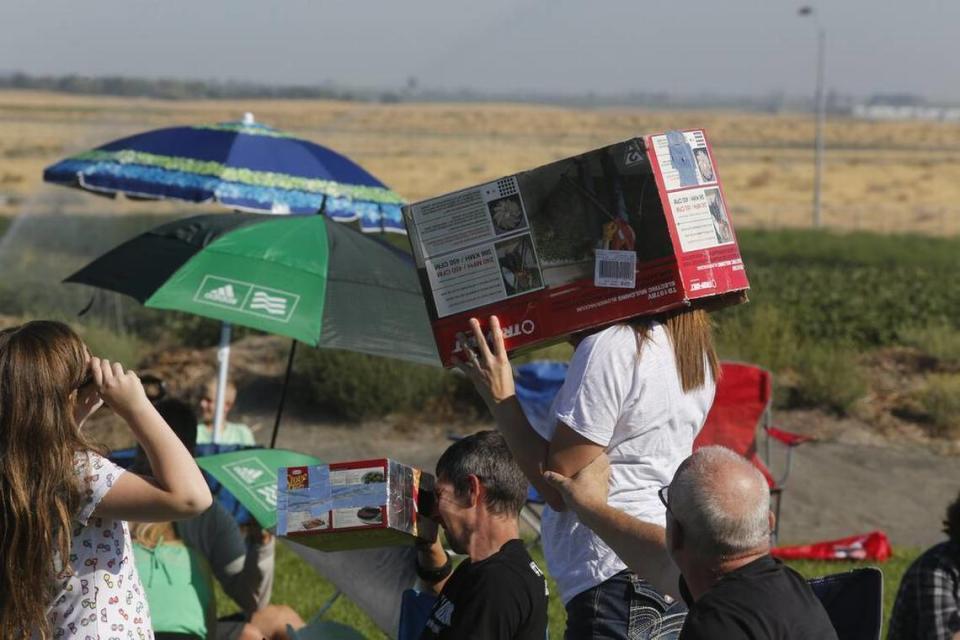
The eclipse viewing event ends at 11 a.m. and the anniversary event starts at 2 p.m.
The Saturday anniversary event will have speakers, educational programming, live views of the sun streamed from the solar telescope to bit screens and replays of the morning’s eclipse.
The Goldendale Observatory houses one of the largest publicly accessible telescopes in the nation.
A night sky program begins at 7 p.m. and reservations are required.
More information is available about the day’s events at goldendaleobservatory.com/special.html.
To help with parking, shuttles will leave the Goldendale High School between 1:30 and 4:30 p.m.
The observatory is at 1602 Observatory Drive, Goldendale, and the shuttle leaves from 525 E. Simcoe Drive, Goldendale.
Watch the eclipse from home
NASA plans to show telescope livestreams of the eclipse on the internet and with the NASA app starting at 7:30 a.m. PDT. Go to nasa.gov/nasatv for the internet livestream.
NASA’s coverage also will include interviews with scientists and a question and answer segment. Anyone can submit questions by using #askNASA.
If you plan to try to watch the eclipse in the sky from your home, you will need eye protection.
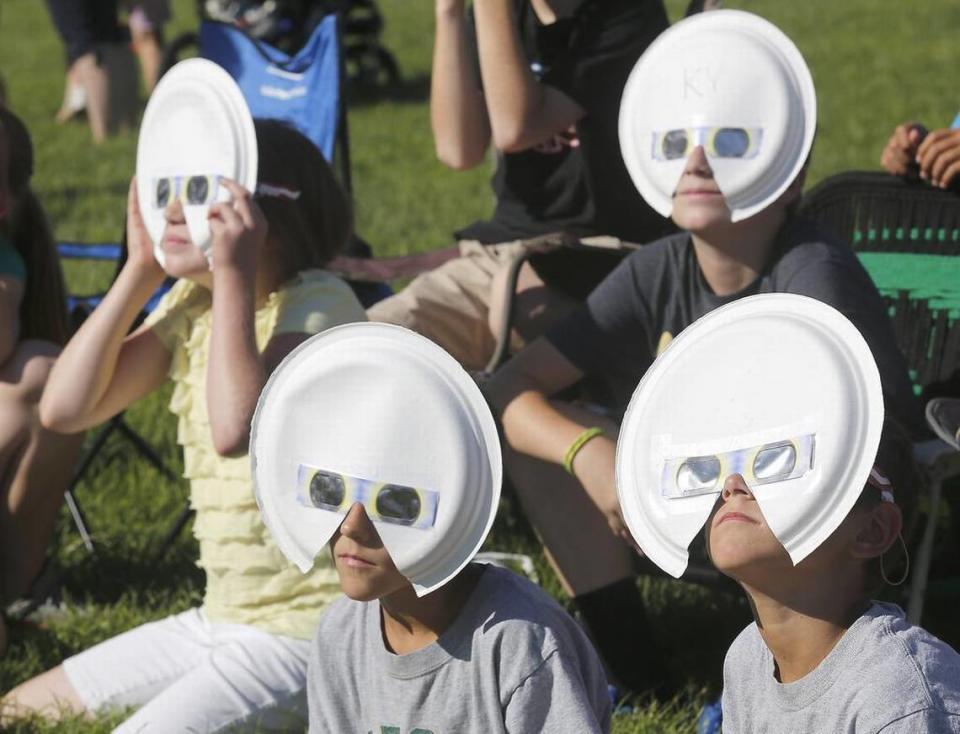
Steinert, with the CBC Planetarium, cautions that they must be purchased from a reputable dealer to make sure your eyes are protected.
The American Academy of Ophthamology posts recommended suppliers of eclipse eye protection at eclipse.aas.org/eye-safety/eyewear-viewers.
Is says that “eclipse glasses” or hand-held solar viewers must meet the worldwide standard known as ISO 12312-2 and should have no scratches or other damage.
Eclipse classes are not regular sunglasses, which are not safe for viewing the sun. Safe solar viewers are thousands of times darker, says NASA.
Viewing any part of the sun through a camera lens, binoculars or a telescope without a special-purpose solar filter secured over the front of the optics will instantly cause severe eye injury, says NASA.
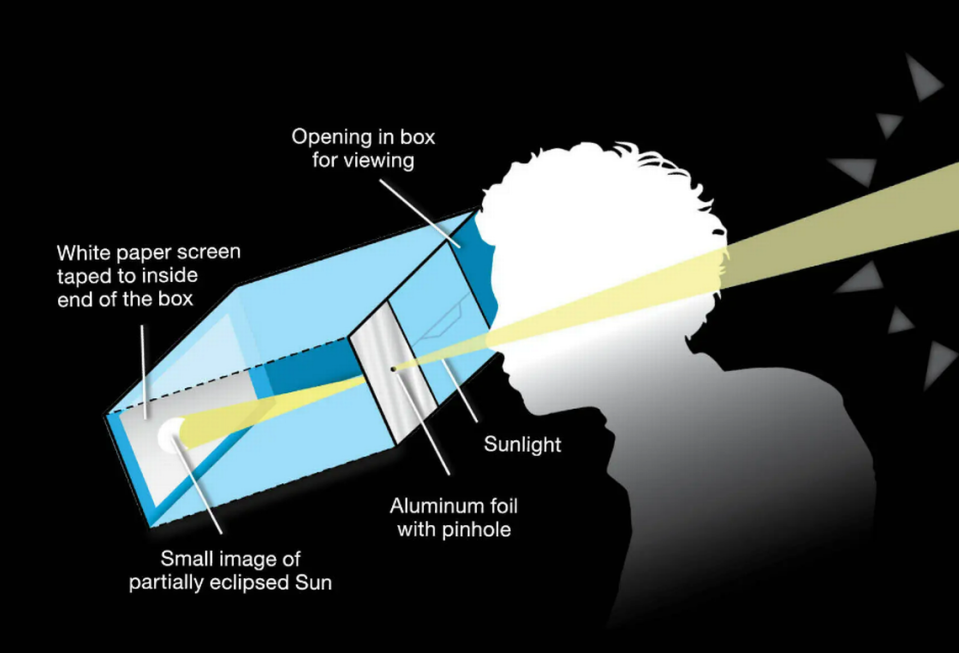
If you don’t have eclipse glasses or a handheld solar viewer, you can use an indirect viewing method, which does not involve looking directly at the Sun.
One way is to use a pinhole projector, which has a small opening (for example, a hole punched in an index card) and projects an image of the Sun onto a nearby surface.
With the Sun at your back, you can then safely view the projected image. But do not look at the Sun through the pinhole, says NASA.


